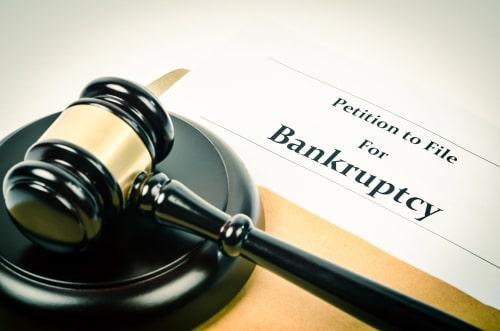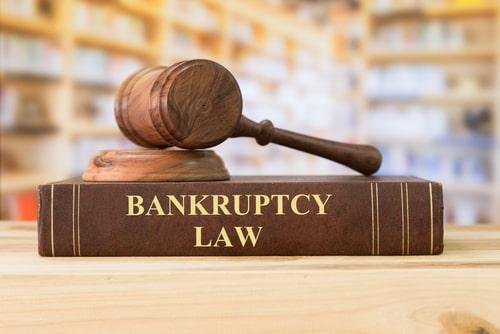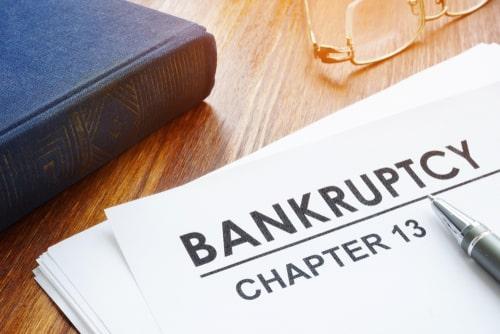Recent Blog Posts
Top Things You Should Know About Declaring Bankruptcy
 Being in debt can feel like you are drowning, especially if you are so far into debt that you do not see a way out. Whatever the reason for the extreme amount of debt, there are options that you can consider to help with the debt. For many people, bankruptcy can be the right option to relieve them of most, or even all of their debt. However, filing for bankruptcy is not easy and can actually be quite complicated and confusing. Each bankruptcy case is different, so it is not always simple for you to know what to expect after you declare bankruptcy. Here are a few things you should know if you are considering filing for bankruptcy.
Being in debt can feel like you are drowning, especially if you are so far into debt that you do not see a way out. Whatever the reason for the extreme amount of debt, there are options that you can consider to help with the debt. For many people, bankruptcy can be the right option to relieve them of most, or even all of their debt. However, filing for bankruptcy is not easy and can actually be quite complicated and confusing. Each bankruptcy case is different, so it is not always simple for you to know what to expect after you declare bankruptcy. Here are a few things you should know if you are considering filing for bankruptcy.
Bankruptcy Does Not Happen Overnight
Some people think of bankruptcy as being similar to small claims court where you usually receive your disposition the same day you attend court. This is not the case. The bankruptcy process is complex and typically lasts at least a few months if you file for a Chapter 7 bankruptcy. If you file for a Chapter 13 bankruptcy, the case is open and ongoing for three to five years, the duration of your repayment plan.
Commissions Owed to Independent Contractor
If you owe sales commissions to an independent contractor when you file bankruptcy, it may be a priority debt. Here’s what determines this.
Our last blog post was about conditions in which wages, commissions, or benefits owed to an employee are “priority” debt.
But what if your debt was not to an employee but an independent contractor? Especially in today’s “gig economy,” small businesses (and large ones, too) often have independent contractors instead of employees.
Why “Priority” Matters
As discussed last week, whether a debt qualifies as a priority debt can make a huge difference.
This most often matters in a Chapter 13 “adjustment of debts” case. You have to pay all priority debts in full during the 3-to-5-year court-approved payment plan. In huge contrast, usually you only pay the non-priority “general unsecured” debts to the extent you can afford to pay. The common result is that you pay priority debts 100%, while those that don’t qualify as priority little or nothing.
What Does the Texas Bankruptcy Process Look Like?
Bankruptcy is the legal process of determining whether or not a person or business is actually unable to pay their debts and if their debts should be discharged. For individuals, there are two main types of bankruptcies -- Chapter 7 and Chapter 13. In a Chapter 7 bankruptcy, typically the filer has their debts discharged or forgiven at the end of the process. In a Chapter 13 bankruptcy, the filer’s debts are reorganized and a repayment plan is entered for three to five years to pay off as much of the debt as possible.
is the legal process of determining whether or not a person or business is actually unable to pay their debts and if their debts should be discharged. For individuals, there are two main types of bankruptcies -- Chapter 7 and Chapter 13. In a Chapter 7 bankruptcy, typically the filer has their debts discharged or forgiven at the end of the process. In a Chapter 13 bankruptcy, the filer’s debts are reorganized and a repayment plan is entered for three to five years to pay off as much of the debt as possible.
According to statistics from the Judiciary Data and Analysis Office, the most common type of bankruptcy that is filed is Chapter 7 bankruptcy, which made up around 60 percent of all bankruptcy filings in 2017. If you are thinking about filing for a Chapter 7 bankruptcy, it is important that you understand the process.
Wages Owed to an Employee
If you owe wages to an employee when you file bankruptcy, that may or not be a priority debt. Here’s what determines this and why it matters.
Our last dozen blog posts have been about “priority” debts. These are special unsecured debts that bankruptcy law treats better than the rest, called “general unsecured” debts.
(Secured debts are a third main category of debts, distinctive because they are attached to your assets as security. We’ve covered those before and will again later. But now we’re addressing priority debts, which are not secured by any of your assets.)
The most common priority debts in consumer bankruptcy cases are income taxes and child/spousal support. So our recent blog posts have focused on these two. But if you have been operating a business with employees or independent contractors there are other important potential priority debts. These involve unpaid wages, salaries, commissions and benefits owed at the time of bankruptcy filing. Our next few blog posts will focus on these.
A Chapter 13 Plan to Catch up on Past-Due Support
Here’s an example of a Chapter 13 payment plan to pay past-due child and/or spousal support, showing how you can catch up safely and sanely.
Today we put what we explained in the last three weeks of blog post into a sample Chapter 13 plan. It shows how powerfully Chapter 13 helps you if you owe past due child and/or spousal support. A Chapter 13 filing protects you from the aggressive collection of overdue support, immediately and as long as needed. And through the Chapter 13 payment plan you get a reasonable and even peaceful way to catch up on support.
The Example
Assume you’ve fallen behind on both child and spousal support because your income was interrupted. You owe $6,000 in past-due support. You’re back at work so you can now pay your ongoing monthly support but have no way to catch up. You have too many other debts.
Your ex-spouse’s support enforcement agency is poised to garnish your wages for the past-due support. If they did so you wouldn’t be able to pay your vehicle loan payment and you’d lose your vehicle.
Lowering Payments on a Chapter 13 Repayment Plan
 For many people, filing for bankruptcy is a fresh start in life. If you have filed for a Chapter 13 bankruptcy, you are still technically paying off your debts, just in a manner that is more manageable for you. A Chapter 13 bankruptcy consolidates all of your debt and creates a repayment plan that lasts for three to five years, depending on your situation. Your monthly payment amount is more than just taking the amount of debt to be repaid and dividing by the number of months you are required to pay. The amount that you are ordered to pay each month is the result of a formula that takes into account your income, assets, debts, and expenses. For some people, this number is a manageable payment. For others, it can be a burden or become one because of a variety of situations.
For many people, filing for bankruptcy is a fresh start in life. If you have filed for a Chapter 13 bankruptcy, you are still technically paying off your debts, just in a manner that is more manageable for you. A Chapter 13 bankruptcy consolidates all of your debt and creates a repayment plan that lasts for three to five years, depending on your situation. Your monthly payment amount is more than just taking the amount of debt to be repaid and dividing by the number of months you are required to pay. The amount that you are ordered to pay each month is the result of a formula that takes into account your income, assets, debts, and expenses. For some people, this number is a manageable payment. For others, it can be a burden or become one because of a variety of situations.
Qualifying for a Modification
Not everyone can qualify to get their Chapter 13 repayment plan modified. The courts will not entertain a request to modify your plan just because -- you have to have a legitimate reason/need for the modification. The most common reason modifications are granted to Chapter 13 repayment plans is because of changed circumstances. These circumstances must be significant enough to severely limit your ability to meet the terms of your current repayment plan. Examples of a significant change in circumstances include:
Catching up on Support through Chapter 13
Chapter 13 gives you a powerful, reasonable, flexible, and even calm procedure for catching up on your past-due child or spousal support.
The last two weeks we’ve shown how Chapter 13 can stop the collection of unpaid child and spousal support. First we talked about how this benefit is much better than Chapter 7 can provide. Then we focused on the ongoing conditions you must meet to keep up this protection.
But there’s a second benefit of Chapter 13 that deserves attention. It doesn’t just stop the collection of unpaid support. Chapter 13 provides a powerfully flexible way to catch up on that support debt.
Why This Is a Huge Benefit
Whatever child or spousal support you owe at the time of your bankruptcy filing, you can’t write off (“discharge”). It’s among the relatively few kinds of debts that bankruptcy does not discharge under any circumstances. See U.S. Bankruptcy Code Sections 523(a)(5) and 101(14A). So you have to pay it, whether you file bankruptcy or not. Whether you file Chapter 7 or 13 or any other kind of bankruptcy.
Conditions for Stopping Support Collections in Chapter 13
Chapter 13 immediately stops the collection of past-due child or spousal support. But to keep that protection you must meet some conditions.
Last week we showed how Chapter 13 stops the collection of unpaid child and spousal support, while Chapter 7 doesn’t. But we ended by emphasizing that anyone can quickly lose this huge benefit of Chapter 13 “adjustment of debts”. Avoiding this requires strictly complying with some conditions. These conditions are arguably sensible ones. But you need to know and understand them so you don’t lose this crucial Chapter 13 benefit. Because these conditions are so important we focus today’s entire blog post on them.
Ongoing Child and Spousal Support
But before we get to these conditions we need to make a strong point. We’re talking here about child and/or spousal support that is unpaid, past-due, at the time of the bankruptcy filing. This past-due support is different from ongoing support.
Purchasing a House after Bankruptcy
 The American Dream is the belief that anyone can succeed in life as long as they work hard and persevere. For many, success includes purchasing and owning their own home. The process of buying a home can be a confusing process and includes many financial and legal procedures. For those who have gone through bankruptcy at some point in their lives, purchasing a home can be even more difficult and confusing. There may be limitations to how much you can borrow from a lender or how soon you can buy a home, but it is not impossible.
The American Dream is the belief that anyone can succeed in life as long as they work hard and persevere. For many, success includes purchasing and owning their own home. The process of buying a home can be a confusing process and includes many financial and legal procedures. For those who have gone through bankruptcy at some point in their lives, purchasing a home can be even more difficult and confusing. There may be limitations to how much you can borrow from a lender or how soon you can buy a home, but it is not impossible.
Check Your Credit Report
Before you begin to apply for mortgages, you should pull a copy of your credit report. Your credit report will contain detailed information about your credit history, including your borrowing history and information about your bankruptcy. You should carefully look over this report to make sure that everything is correct on the report and that there are no mistakes that could make your report look more unfavorable than it really is.
Unpaid Child and Spousal Support in Chapter 13
Chapter 13 DOES stop the collection of unpaid child or spousal support from your after-filing income and other assets. Chapter 7 does NOT.
Last week we discussed situations in which Chapter 7 would help if you’re behind on child or spousal support payments. We made clear that Chapter 7 “straight bankruptcy” provides only limited help. Mostly it gives you relief from your other debts so that you can concentrate on catching up on support. Chapter 13 “adjustment of debts” is a much more powerful option when Chapter 7 is not enough.
The Main Benefits of Chapter 13 When Behind on Support
Chapter 13 takes much, much longer than Chapter 7, and is generally more expensive. But it provides some remarkable benefits compared to Chapter 7. These benefits can make the longer time and greater expense of Chapter 13 more than worthwhile. The main benefits of Chapter 13 are that:






